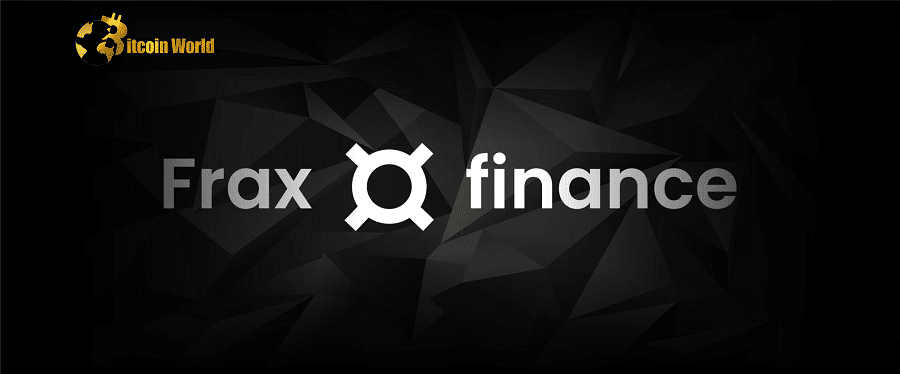In a significant shift for the decentralized finance (DeFi) landscape, Frax Finance, a prominent stablecoin protocol, has decided to move away from its algorithmic roots. The protocol’s community has voted overwhelmingly in favor of fully collateralizing its native stablecoin, Frax (FRAX). This marks the end of an era for Frax’s unique approach and raises crucial questions about the future of algorithmic stablecoins in a rapidly evolving regulatory environment.
What’s Happening with Frax?
As of February 23rd, a pivotal governance proposal, FIP-188, reached a quorum with an impressive 98% of votes in favor. This proposal signals a major overhaul of FRAX’s collateralization model. Essentially, Frax is transitioning from a partially algorithmic stablecoin to one that is fully backed by collateral. This decision means the days of FRAX relying on complex algorithms to maintain its peg to the US dollar are coming to an end.
The proposal itself clearly stated the rationale: it’s time for Frax to gradually dismantle its algorithmic foundation. But what exactly does this mean, and why is Frax making this move now?
Understanding Frax’s Algorithmic Past
To grasp the significance of this change, it’s important to understand Frax’s original design. When Frax launched, it employed a “variable collateral ratio.” This innovative approach meant the level of collateral backing FRAX was not fixed but dynamically adjusted based on market demand.
Think of it like this:
Initially, Frax was designed as a hybrid system:
- Partially Algorithmic: A portion of FRAX’s stability relied on algorithms that would adjust the supply of FRAX and FXS (Frax Share, the governance token) based on market conditions.
- Partially Collateralized: The remaining portion was backed by crypto assets.
At one point, this hybrid model resulted in FRAX being around 80% backed by collateral. The algorithm played a role in stabilizing the remaining portion, primarily through the creation and burning of FXS.
It’s worth noting that FXS has seen a positive reaction to this news, with its value increasing by 12% in the 12 hours following the proposal’s approval. This suggests market confidence in Frax’s shift towards full collateralization.
Why the Shift to Full Collateralization?
Several factors likely contributed to Frax’s decision to abandon its algorithmic underpinnings:
- Market Maturity: The DeFi space has evolved significantly since Frax’s inception. Full collateralization is often seen as a more robust and transparent model, particularly in times of market volatility.
- Regulatory Pressure: The elephant in the room is undoubtedly increasing regulatory scrutiny of stablecoins. The collapse of Terra/Luna in 2022 sent shockwaves through the crypto world, prompting regulators worldwide to take a closer look at stablecoin mechanisms, especially algorithmic ones.
- Canadian Regulatory Changes: As highlighted in the original article, the Canadian Securities Administrators recently announced stricter rules for crypto businesses and stablecoin issuers. Crucially, these rules include a ban on algorithmic or non-fiat-backed stablecoins for legal operation in Canada. This kind of regulatory stance could be indicative of a broader trend.
These factors suggest that Frax’s move is not just a technical adjustment but a strategic decision to ensure long-term viability and compliance in a changing regulatory landscape.
How Will Frax Achieve 100% Collateralization?
Frax’s plan to reach 100% collateralization is methodical and doesn’t involve creating more FXS. Instead, they intend to leverage existing protocol revenue. Here’s a breakdown of their approach:
- Stopping FXS Buybacks: Protocol revenue that was previously used for FXS buybacks will now be redirected towards increasing the collateral ratio.
- Frax Ether (frxETH) Purchases: Frax will allocate up to $3 million per month to purchase Frax Ether (frxETH).
What is frxETH?
frxETH is another key component of the Frax ecosystem. It’s a stablecoin-like token pegged to Ether (ETH). frxETH plays a vital role in:
- Enhancing Ether Liquidity: It simplifies the exchange of Ether liquidity within the Frax ecosystem.
- Boosting Collateral: By purchasing frxETH, Frax strengthens its collateral reserves, moving closer to the 100% target.
The growth of frxETH has been notable recently, as reported by DeFiLlama, indicating its increasing importance within the Frax ecosystem.
What Does This Mean for the Future of Stablecoins?
Frax Finance’s decision to abandon its algorithmic model is a significant moment for the stablecoin sector. It raises several important points:
- The Viability of Algorithmic Stablecoins: The move casts further doubt on the long-term sustainability of purely algorithmic stablecoin models, especially in the face of regulatory pressure and market instability.
- Focus on Collateralization: It reinforces the trend towards fully or over-collateralized stablecoins as the preferred approach for stability and regulatory compliance.
- Evolution of DeFi: DeFi protocols are demonstrating adaptability and a willingness to adjust their models to navigate regulatory challenges and ensure user confidence.
Key Takeaways
In summary, Frax Finance’s shift to full collateralization is a landmark decision driven by a combination of market evolution and regulatory headwinds. Here are the core takeaways:
- End of an Era: Frax is moving away from its algorithmic stablecoin foundation.
- Full Collateralization Ahead: FRAX will become 100% backed by collateral.
- Strategic Shift: This move is likely influenced by increasing regulatory scrutiny and the lessons learned from the Terra/Luna collapse.
- Focus on Sustainability: Frax is prioritizing long-term stability and regulatory compliance.
- Impact on DeFi: This decision could signal a broader trend towards collateralized stablecoin models in the DeFi space.
As the cryptocurrency landscape continues to mature, Frax Finance’s proactive approach to adapting its stablecoin model will be closely watched by the industry and regulators alike. It underscores the ongoing dialogue and evolution within DeFi as it strives for both innovation and long-term stability.
Disclaimer: The information provided is not trading advice, Bitcoinworld.co.in holds no liability for any investments made based on the information provided on this page. We strongly recommend independent research and/or consultation with a qualified professional before making any investment decisions.


